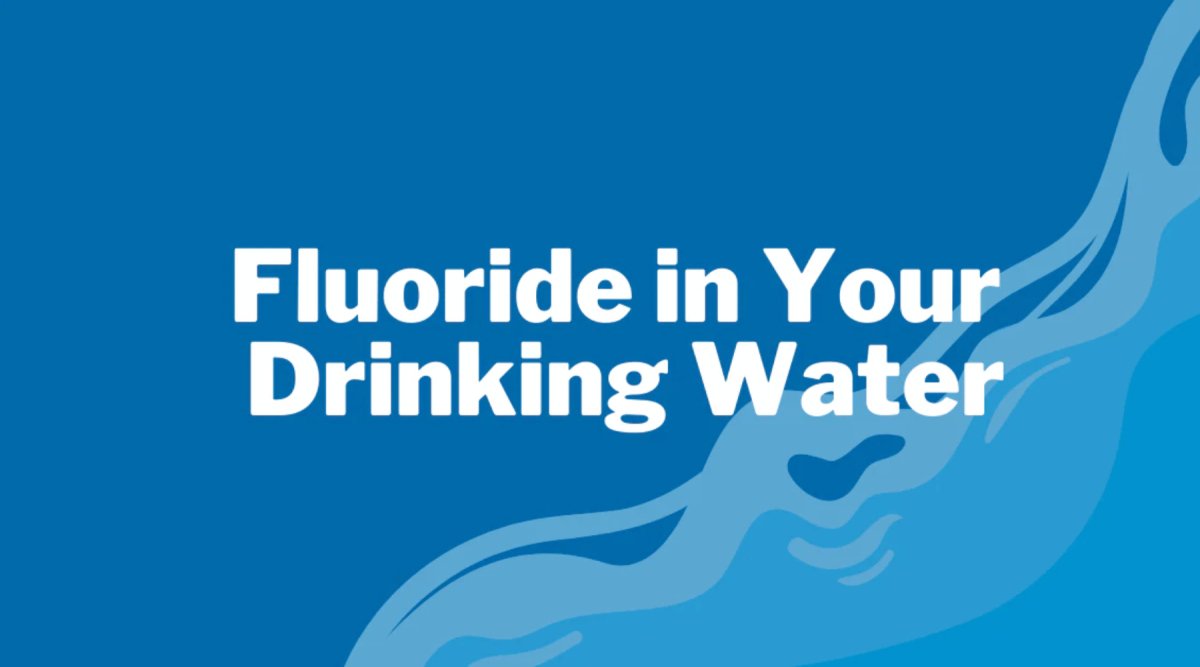Your Cart is Empty
CYBER MONDAY SALE ENDS THIS WEEK I 20% OFF STOREWIDE
Menu

Have a question? Call us 7 days a week!
CYBER MONDAY SALE ENDS THIS WEEK I 20% OFF STOREWIDE
How to Remove Fluoride from Water? (2024)
November 29, 2023 5 min read

How to Remove Fluoride from Water At Home - The Ultimate Guide
Worried about high fluoride levels in your water? Learn how to remove fluoride from water with this ultimate guide!
Fluoride is a naturally occurring mineral found in water, soil, plants, and even the human body. While it is essential for dental health in appropriate amounts, too much exposure to fluoride through drinking water can lead to health concerns including tooth decay.
As a concerned homeowner, you can take action to limit your exposure to fluoride fluoridated water by implementing a wide variety of filtration techniques.
In this comprehensive guide, we'll explore various methods to effectively remove or lower your exposure to fluoride from your home water to protect the longevity of your home's water piping as well as prevent tooth decay and other fluoride-driven health concerns.
Understanding Fluoride Contamination & Dental Health
Fluoride is often added to public water supplies to promote dental health. However, high levels of fluoride in drinking water can lead to dental fluorosis, skeletal fluorosis, and other health issues. It's essential to be well-informed about the potential health impacts of fluoride and the available methods for both fluoridation and its removal.
The US Department of Health & Human Services advises that fluoride levels in drinking water should remain around 0.7 milligrams per Liter (mg/L).
1. Activated Alumina Filters
Activated alumina is a highly effective adsorbent that can help to remove fluoride from drinking water. It works by attracting fluoride ions and trapping them, making it an efficient solution for reducing fluoride levels in your tap water.
To use activated alumina for fluoride removal, you can purchase activated alumina cartridges or filters designed for this purpose. Install these filters at the point of use, such as under the sink, and replace them as recommended by the manufacturer.
2. Reverse Osmosis Water Filter
Reverse osmosis is a highly efficient method for removing fluoride from water. RO systems utilize a semipermeable membrane to filter out fluoride ions and a wide range of other contaminants, providing you with clean and fluoride-free drinking water.
Consider installing an RO system for your home to ensure a reliable and consistent supply of fluoride-free water. These systems can be installed at the point of use, typically under the sink or connected to your water supply.

3. Activated Carbon Filters
Activated carbon filters are a popular and affordable choice for reducing fluoride levels in water. These filters use activated carbon to adsorb fluoride and other impurities, improving the taste and odor of your water in the process.
You can use activated carbon filters in various forms, including pitcher-style filters, faucet-mounted filters, and whole-house filtration systems. Evaluate your water consumption patterns and choose the appropriate type of filter that fits your needs.
4. Distillation
Distillation is a simple yet effective method to remove fluoride from water. By boiling water and condensing the steam back into water, fluoride, along with other impurities, is left behind in the boiling chamber due to its higher boiling point than water.
Consider using a distillation unitto purify your tap water and eliminate fluoride and other potential contaminants. Distilled water can serve multiple household purposes, including drinking, cooking, and more.
5. Ion Exchange Resins
Ion exchange resins are another effective method to remove fluoride from water. These resins exchange fluoride ions with other ions in the resin, reducing the fluoride content in the water.
You can find water filters or filtration systems that utilize ion exchange resins specifically designed for fluoride removal. Install these systems at the point of use to ensure fluoride-free water for drinking and cooking.
6. Bone Char Carbon Filtration
Bone char carbon filtration is a traditional method for fluoride removal. It is derived from animal bones and teeth and has a high affinity for fluoride ions, making it an effective filtration medium.
Explore the option of bone char carbon filters and filtration systems, especially if you prefer a natural and traditional approach to fluoride removal. These systems can be a valuable addition to your home water purification and filtration setup.
7. Alkaline Water Ionizers
Alkaline water ionizers can help reduce fluoride levels in water by raising its pH. While this method may not entirely remove fluoride in water, it can contribute to improving water quality.
Consider using an alkaline water ionizer as a supplementary approach to reduce fluoride content and enhance the overall quality of your drinking water.
8. Educational Resources on Fluoride in Drinking Water
As a concerned homeowner, it's essential to educate yourself and your family about fluoride contamination and the available solutions for its removal. Explore credible sources of information, such as government websites, reputable health organizations, and reliable water treatment equipment providers.
Additionally, consider reaching out to water treatment experts or consultants who can provide personalized recommendations based on your specific water quality concerns.
Determining What Filtration System is Right For Your Family
Consider Household Size:
The size of your household plays a significant role in determining the capacity and output of a fluoride filtration system. Here are some considerations based on different household sizes:
Small households (1-2 members):
For small households, a compact under-sink or countertop filtration system could be a convenient option. Look for systems that have a decent flow rate and can effectively remove fluoride from drinking water while retaining essential minerals.
Medium-sized households (3-5 members):
Medium-sized households may require a slightly larger capacity system. A whole-house filtration system or an inline filter installed at the main water supply line can effectively deliver fluoride-free water to all faucets in your home.
Large households (6+ members):
Large households often have higher water demands. In this case, a point-of-entry system with a high flow rate, such as a multi-stage filtration system, may be the best choice. These systems can handle increased water volume and effectively remove fluoride throughout the house.
Ease of Installation:
Installation convenience is another crucial aspect to consider when choosing a fluoride filtration system. Here are a few options to consider:
Under-Sink or Countertop Systems:
These systems are generally easy to install and require minimal plumbing modifications. They can be installed directly on your existing faucet or under the sink, providing you with immediate access to fluoride-free water.
Whole-House Systems:
Whole-house systems may require professional installation due to their complexity. However, once installed, they provide fluoride-free water to all fixtures throughout your home with minimal maintenance.
Inline Filters:
Inline filters are easy to install and can be placed directly on your main water supply line, providing a reliable and cost-effective solution. They require minimal maintenance, making them an appealing choice for many households.
Let Our Experts Assist!
Choosing the best fluoride filtration system for your household requires careful consideration of both household size and ease of installation. By understanding your specific needs and preferences, you can select a system that will effectively remove fluoride from your water supply, promote better oral health throughout, and ensure a hassle-free installation experience.
Remember to thoroughly research different products, read customer reviews, and consult with professionals if needed. By making an informed decision, you can enjoy clean, fluoride-free water throughout your home, providing peace of mind and contributing to your family's overall well-being.
Investing in a fluoride filtration system is a proactive step towards safeguarding your health and that of your loved ones. Make the right choice for your household size and installation needs, and experience the benefits of clean, fluoride-free water every day.
Water is vital, so take control of water source and choose the best fluoride filtration system for your home today!
We are happy to provide support if you have additional questions. Feel free to connect with a filtration expert today!
 800-374-2143
800-374-2143
Leave a comment
Comments will be approved before showing up.
